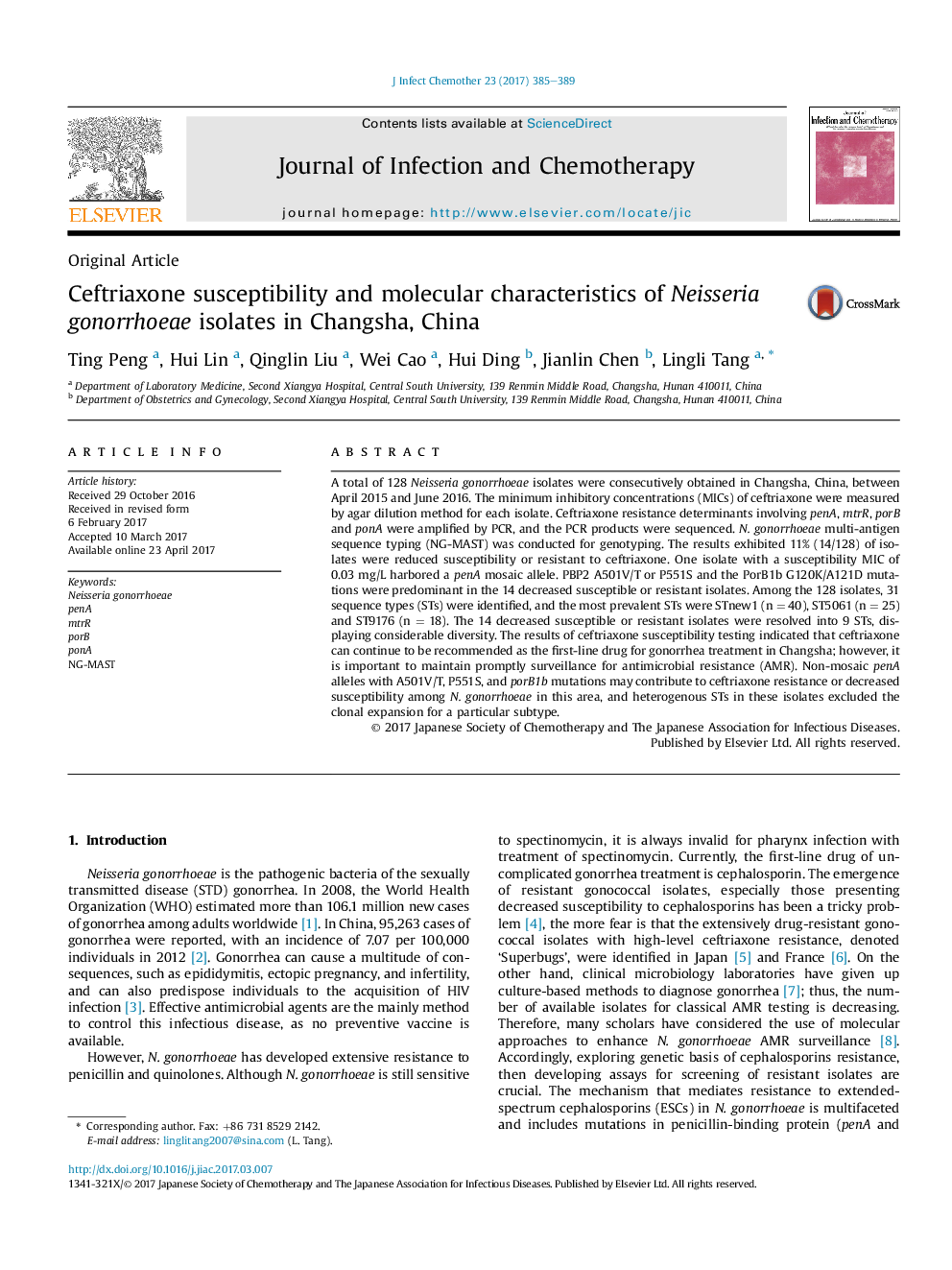| Article ID | Journal | Published Year | Pages | File Type |
|---|---|---|---|---|
| 5668923 | Journal of Infection and Chemotherapy | 2017 | 5 Pages |
A total of 128 Neisseria gonorrhoeae isolates were consecutively obtained in Changsha, China, between April 2015 and June 2016. The minimum inhibitory concentrations (MICs) of ceftriaxone were measured by agar dilution method for each isolate. Ceftriaxone resistance determinants involving penA, mtrR, porB and ponA were amplified by PCR, and the PCR products were sequenced. N. gonorrhoeae multi-antigen sequence typing (NG-MAST) was conducted for genotyping. The results exhibited 11% (14/128) of isolates were reduced susceptibility or resistant to ceftriaxone. One isolate with a susceptibility MIC of 0.03 mg/L harbored a penA mosaic allele. PBP2 A501V/T or P551S and the PorB1b G120K/A121D mutations were predominant in the 14 decreased susceptible or resistant isolates. Among the 128 isolates, 31 sequence types (STs) were identified, and the most prevalent STs were STnew1 (n = 40), ST5061 (n = 25) and ST9176 (n = 18). The 14 decreased susceptible or resistant isolates were resolved into 9 STs, displaying considerable diversity. The results of ceftriaxone susceptibility testing indicated that ceftriaxone can continue to be recommended as the first-line drug for gonorrhea treatment in Changsha; however, it is important to maintain promptly surveillance for antimicrobial resistance (AMR). Non-mosaic penA alleles with A501V/T, P551S, and porB1b mutations may contribute to ceftriaxone resistance or decreased susceptibility among N. gonorrhoeae in this area, and heterogenous STs in these isolates excluded the clonal expansion for a particular subtype.
